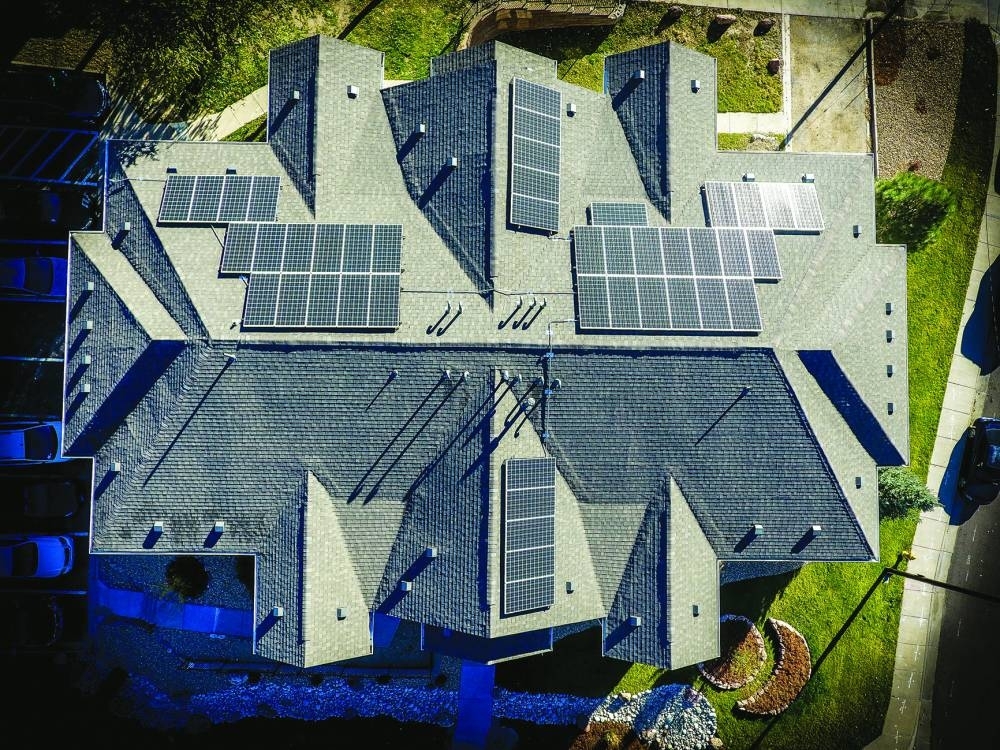What the climate fight is really about
What the climate fight is really about| Gulf Times Gulf Times


The Importance of Climate Action and Sustainable Development Goals

The solar panels and battery packs will ensure that your lights stay on even if the grid goes down because of extreme weather.

Gernot Wagner
Introduction
Climate change is no longer a future problem. It is here, and the effects are all around. Today’s extreme weather events are just a preview of the pain that awaits humanity in the coming decades. Despite the accelerating pace of clean-energy deployment, global greenhouse-gas emissions are still rising.
The Importance of Climate Action
Climate action is not only about keeping average temperatures from rising, but also about keeping uncertainties in check. The floods, droughts, wildfires, and other extreme climate-driven phenomena are what make the problem so costly. Climate policymaking that cuts off the tail end of the extreme-weather distribution should be regarded as a major success.
Investing in Resilience
Investments in low-carbon energy sources are investments in resilience and decreased uncertainty. Lowering one’s average carbon footprint is valuable and should be appropriately rewarded. Solar panels, battery packs, heat pumps, and induction stoves provide resilience in extreme circumstances, ensuring that lights stay on and reducing dependence on fossil fuels.
Reducing Uncertainty
Less dependence on fossil fuels means less uncertainty. While the clean-energy transition relies on potentially volatile commodities, such as copper and lithium, the scale of materials used in clean technologies is much smaller compared to fossil fuels. Additionally, advancements in technology will continue to drive down the cost of solar and all-electric appliances, making them more accessible.
The Role of Sustainable Development Goals (SDGs)
Climate risk is financial risk, and climate action is an insurance policy. By embracing uncertainties and taking climate action, we can mitigate the impacts of climate change and prevent the worst outcomes. This aligns with the Sustainable Development Goals (SDGs), particularly Goal 13: Climate Action, which aims to combat climate change and its impacts.
Conclusion
While climate change presents significant challenges, it is crucial to remain optimistic and take action to address the risks and uncertainties associated with it. By investing in clean energy, reducing dependence on fossil fuels, and embracing the SDGs, we can work towards a more sustainable and resilient future.
Points to Ponder
- The pace of clean-energy deployment is faster than ever, but global greenhouse-gas emissions are still rising.
- Climate action is not only about keeping average temperatures from rising, but also about keeping uncertainties in check.
- Investing in low-carbon energy sources is an investment in resilience and decreased uncertainty.
- The cost of solar and all-electric appliances will only decline over time, whereas natural gas and oil markets will continue to fluctuate.
- Less dependence on fossil fuels means less uncertainty.
- The clean-energy transition also relies on potentially volatile commodities, but these are orders of magnitude smaller than the billions of tonnes of fossil fuels being burned every year.
- Climate risk is financial risk, and climate action is an insurance policy.
SDGs, Targets, and Indicators
1. Which SDGs are addressed or connected to the issues highlighted in the article?
- SDG 7: Affordable and Clean Energy
- SDG 9: Industry, Innovation, and Infrastructure
- SDG 11: Sustainable Cities and Communities
- SDG 13: Climate Action
2. What specific targets under those SDGs can be identified based on the article’s content?
- SDG 7.2: Increase substantially the share of renewable energy in the global energy mix.
- SDG 9.4: Upgrade infrastructure and retrofit industries to make them sustainable.
- SDG 11.5: Reduce the impact of natural disasters on cities.
- SDG 13.1: Strengthen resilience and adaptive capacity to climate-related hazards.
3. Are there any indicators mentioned or implied in the article that can be used to measure progress towards the identified targets?
- Deployment rate of clean-energy technologies (indicator for SDG 7.2)
- Investments in low-carbon energy sources (indicator for SDG 9.4)
- Reduction in the frequency and intensity of extreme weather events (indicator for SDG 11.5)
- Improvement in resilience and adaptive capacity to climate-related hazards (indicator for SDG 13.1)
SDGs, Targets, and Indicators Table
| SDGs | Targets | Indicators |
|---|---|---|
| SDG 7: Affordable and Clean Energy | Increase substantially the share of renewable energy in the global energy mix (7.2) | Deployment rate of clean-energy technologies |
| SDG 9: Industry, Innovation, and Infrastructure | Upgrade infrastructure and retrofit industries to make them sustainable (9.4) | Investments in low-carbon energy sources |
| SDG 11: Sustainable Cities and Communities | Reduce the impact of natural disasters on cities (11.5) | Reduction in the frequency and intensity of extreme weather events |
| SDG 13: Climate Action | Strengthen resilience and adaptive capacity to climate-related hazards (13.1) | Improvement in resilience and adaptive capacity to climate-related hazards |
Behold! This splendid article springs forth from the wellspring of knowledge, shaped by a wondrous proprietary AI technology that delved into a vast ocean of data, illuminating the path towards the Sustainable Development Goals. Remember that all rights are reserved by SDG Investors LLC, empowering us to champion progress together.
Source: gulf-times.com

Join us, as fellow seekers of change, on a transformative journey at https://sdgtalks.ai/welcome, where you can become a member and actively contribute to shaping a brighter future.







